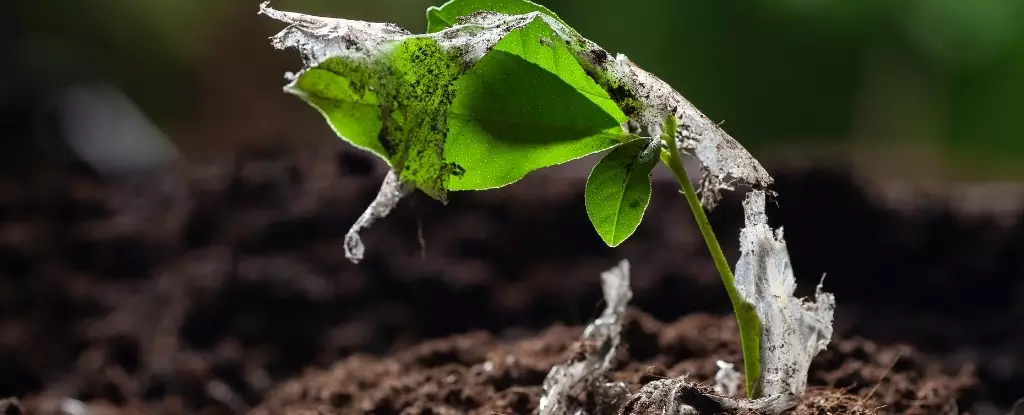In an era that boasts technological advancements and a heightened consciousness about health and environment, the prevalence of microplastics seems like a monumental oversight — an uninvited guest at the dinner table that no one dares to acknowledge. Tiny plastic particles — virtually invisible and constituting a significant environmental hazard — are infiltrating agricultural soils and, by extension, our food supply. The implications are as frightening as they are systemic, and they demand immediate attention.
Evidence reveals that microplastics are not merely trash washed ashore or buried within landfills; they are making their way into our everyday lives, subtly beckoning us to inquire, “What are we actually eating?” The recent extensive research, notably from environmental biotechnologist Joseph Boctor at Murdoch University, shines an alarming light on just how far these particles have permeated our ecosystems. Nearly 200 scientific papers paint a bleak picture, revealing that hundreds of thousands of tonnes of microplastics find their way to agricultural land each year, particularly in Europe and North America.
A Time Bomb in Our Soils
Soils, once revered as the foundation of agriculture, have turned into a “plastic sink.” The introduction of microplastics through fertilizers, sewage sludge, and various agricultural practices — such as plastic mulching — has become a major concern. Boctor’s study identifies that up to 22,500 tonnes of microplastics seep into UK soils annually, raising questions about the long-term consequences for food safety and environmental health.
The widespread adoption of plastic mulching, initially embraced for its ability to enhance crop yield and water preservation, comes with an insidious downside. This common farming technique has rapidly emerged as a principal contributor to microplastic contamination in our soils. It’s a poignant reminder that convenience often blinds us to lurking dangers.
The Food Chain Fallout
When we think of microplastics, it’s easy to envision litter washed up on beaches or contamination in aquatic life. However, compelling evidence indicates that these particles can also directly enter our food chain. Through various mechanisms, such as endocytosis — when plant cells absorb external materials — microplastics may infiltrate crops like lettuce and carrots. The thought of consuming an organic salad only to ingest these sinister particles transforms an ostensibly healthy choice into a potential health hazard.
Consider this: while our agricultural systems promote healthy eating, they are simultaneously cultivating a toxic environment. The findings shed light on an unsettling reality: consuming these microplastics could lead to dire consequences for human health. From hormone disruptions and fertility issues to a higher risk of cancer, the link between microplastic ingestion and significant health problems is growing more alarming.
The Regulatory Blind Spot
Despite the evident severity of this issue, the regulatory focus on microplastics seems limited and often inadequate. What stands out from Boctor’s research is not merely the presence of these particles but the obscurity surrounding their effects. Why is there a lack of comprehensive research on microplastics and their impact on agriculture and public health? The overarching question lingers: how can we assume that our food is safe when the very soil in which it grows is slowly being transformed into a plastic-laden grave?
The absence of stringent regulations is befuddling, especially as we become increasingly conscious of environmental sustainability and health risks. Policymakers must take decisive action to protect public health from this growing menace. The crisis of plastic pollution is not merely a nuisance; it is a ticking time bomb awaiting a catalyst to wreak havoc on generations to come.
Health Risks and Immediate Actions
While the scientific community continues seeking solutions and understanding, the onus is on consumers, farmers, and regulations alike to understand that the stakes have never been higher. Research suggests that microplastics can cross placental barriers, alarming evidence that should galvanize immediate action. The additives used in plastics — particularly phthalates and certain flame retardants — are creeping into our systems, worsening the risk of chronic health issues.
As individuals and communities, it is our responsibility to advocate for cleaner agricultural practices, transparent food sourcing, and stricter regulations surrounding the utilization of plastics in agriculture. Ignoring this issue is no longer a viable option. The threat of microplastics, coupled with the satisfaction of immediate agricultural needs, poses a challenging paradox. It is time we face the inconvenient truth about our food systems and demand accountability from those at the helm of agricultural production and public health. The stakes are not just about the health of our planet; they are about the health of humanity.


Leave a Reply